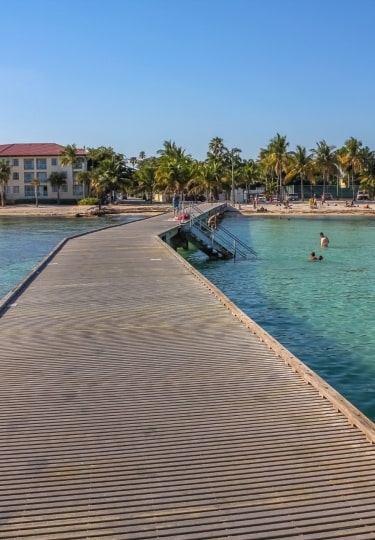Snorkeling in Key West is a mesmerizing experience, given that the island lies just a few miles across the ocean from the Florida Reef. This 350-mile stretch of living coral extends all the way from Palm Beach to the remote Dry Tortugas islands.
You’ll never tire of the marine life here, with more than 1,400 species of plants and animals thriving on the coral system. There are also some 23 artificial reefs created by deliberately sinking ships, which are colonized by marine life.
Whatever style of Key West snorkeling trip you choose, you could see fan and brain coral, brightly colored anemones, lobsters, sea sponges, nurse sharks, sea turtles, and electric blue tang.
Stingrays glide across the sandy ocean floor, while moray eels peek out of their rock hideaways. This wonderful marine ecosystem really is like a bustling underwater city.
Fort Zachary Taylor State Park
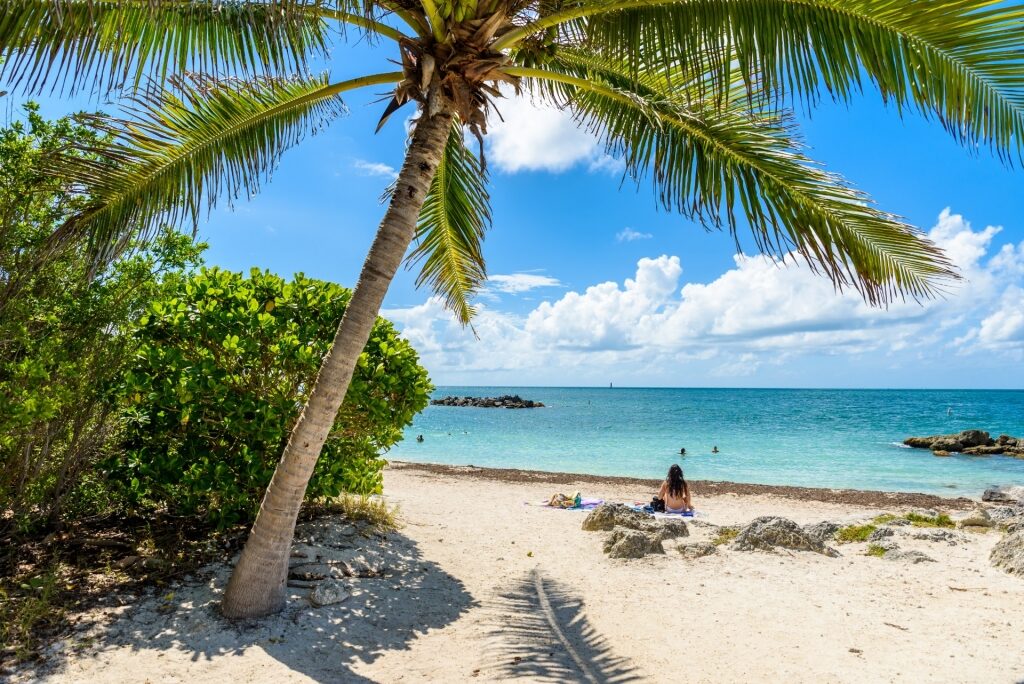
Fort Zachary Taylor State Park
Fort Zachary Taylor was constructed in 1845, predating the Civil War, and houses the world’s largest cache of Civil War armaments. The 54 acres around the old fort stretch down to a pebble beach, from which it’s easy to swim alongside the breakwaters and over patches of reef.
You could see yellowtail snapper here, as well as lobsters and hard and soft corals. When you’ve had enough of the water, take a tour of the fort and see cannons built during the Civil War, or gaze out at the azure sea from the shade of a feathery pine tree.
Read: Unique Things To Do in Key West
Smathers Beach
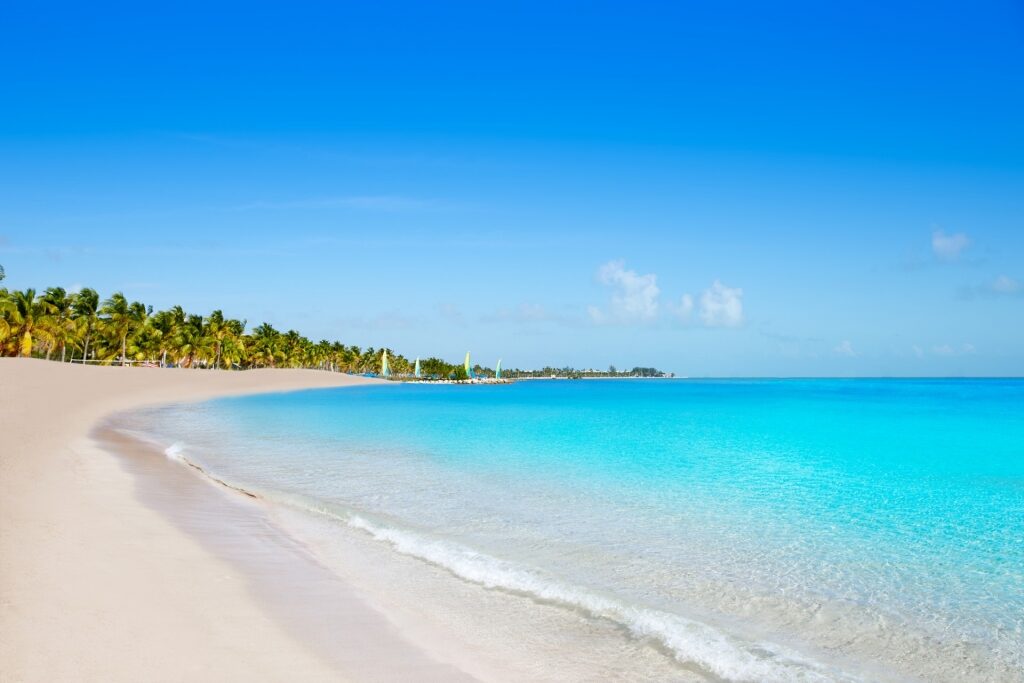
Smathers Beach
The longest beach in Key West, lined with palm trees and running parallel to South Roosevelt Boulevard, is a great spot for groups or families looking for different activities.
Head into the warm, shallow water in search of marine life. You won’t see a huge amount of fish here compared to the offshore reefs, but Smathers Beach is a great place for kids and novice snorkelers to get used to the feel of the mask, fins, and snorkel.
Don’t be alarmed if you see seaweed washed up along the shore of the beaches in Key West; it’s a perfectly natural part of the ecosystem and an important food source and hiding place for marine creatures.
Landlubbers can play beach volleyball on the silky-smooth sand, while sun-worshipers can relax on a lounger. There are food trucks, restrooms, and watersports equipment rentals, too.
Read: Best Things to Do in Key West with Kids
Higgs Beach
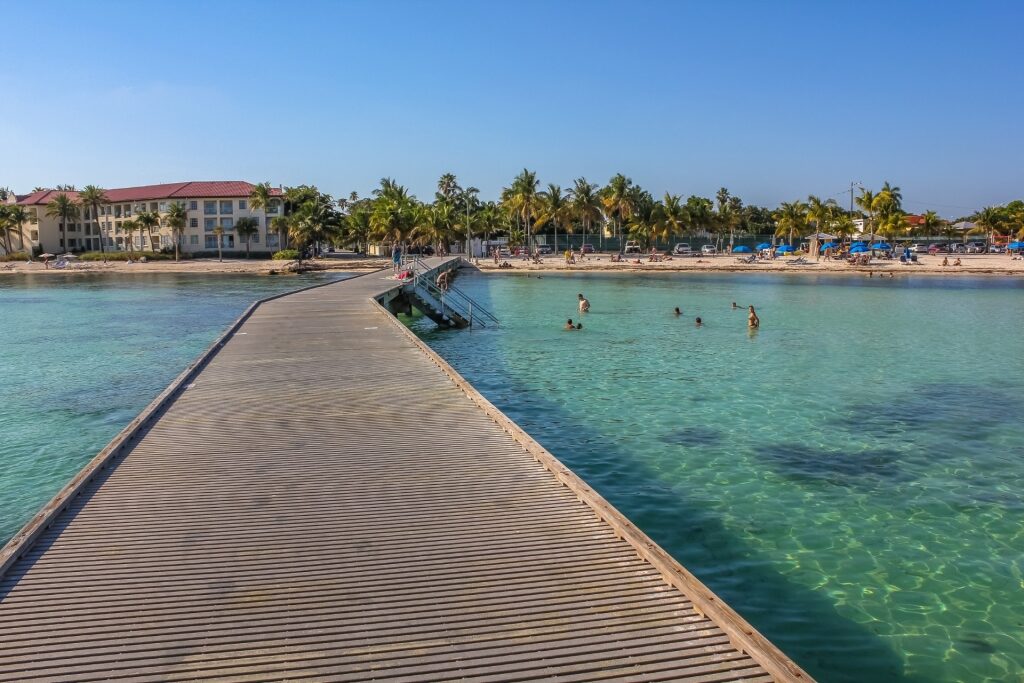
Higgs Beach
If you want to snorkel straight off the shore, then Higgs Beach is a great place to start. It’s also safe for kids, as jet skis and motorized boats aren’t allowed in the swimming area.
The waters here are protected as a marine park and you’ll be thrilled to spot shimmering parrotfish, graceful angelfish, and bright yellow butterfly fish teeming around the pier.
Key West is known for its excellent snorkeling, and the underwater scenery here is dazzling, with brain coral, delicate sea fans, and sea whips, a brightly colored soft coral.
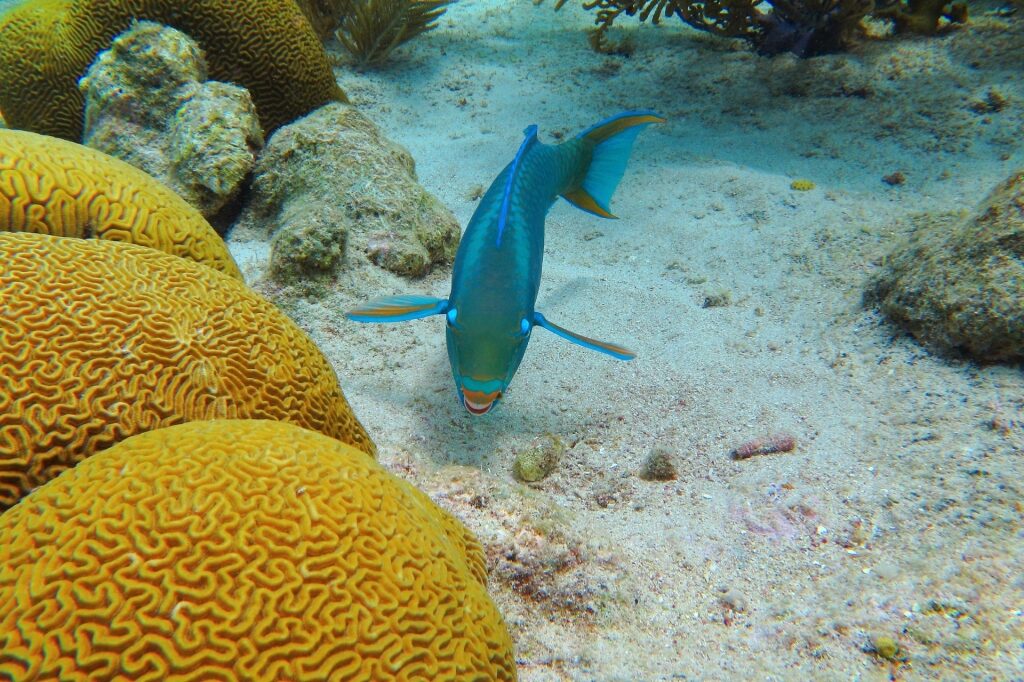
Parrotfish
While you’re snorkeling, listen carefully—you can hear the crunching sound of parrotfish munching on coral. Study one up close and you’ll see they have strong, beak-like teeth, hence the name.
Look out for sea stars, sea urchins, conch, and if you’re lucky, a spotted ray flitting across the grassy sand flats. Back ashore, you’ll find plenty of facilities, including picnic tables, restrooms, and umbrellas.
Incidentally, if you intend to snorkel over the coral beds around Key West, it’s important to use reef-safe sunblock, which will protect you and the delicate coral. You can buy this in Key West itself, and if you join a snorkeling tour, the operator should provide it.
Key West National Wildlife Refuge
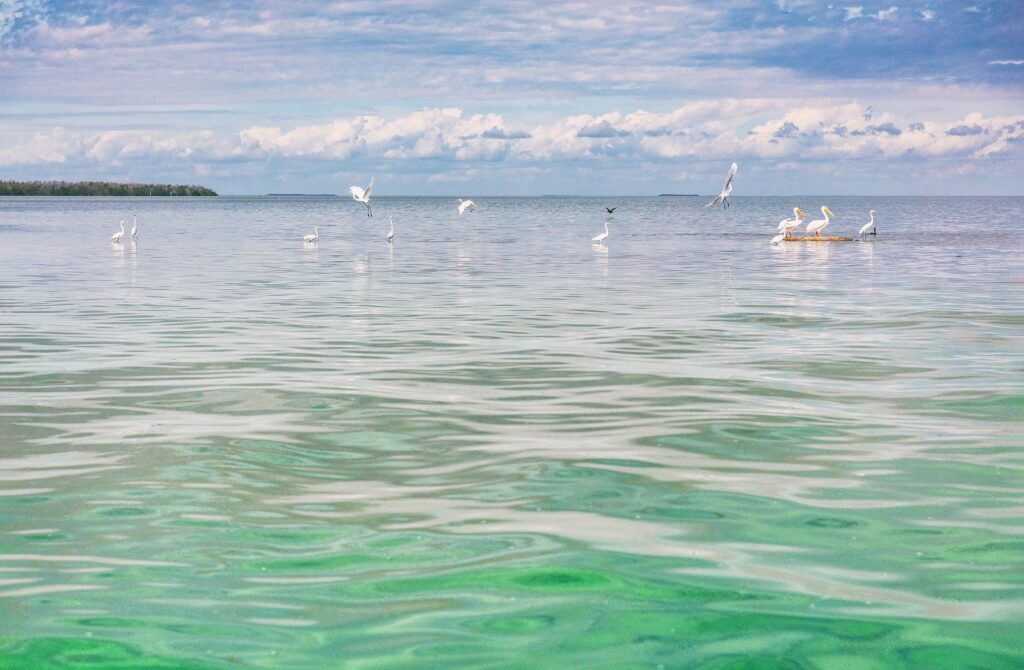
Key West National Wildlife Refuge
This 375-square-mile patch of ocean incorporates the Marquesas Keys, some 13 other islands, and vast expanses of the Florida Reef. Many of the day boats departing from Key West bring you here for backcountry snorkeling and bird-watching.
One of the best ways to visit these aquamarine waters is by catamaran. Accredited “Dolphin SMART” tour operators, which are committed to observing dolphins responsibly in their natural habitat, will take you out on a dolphin-watching trip followed by snorkeling in the wildlife refuge.
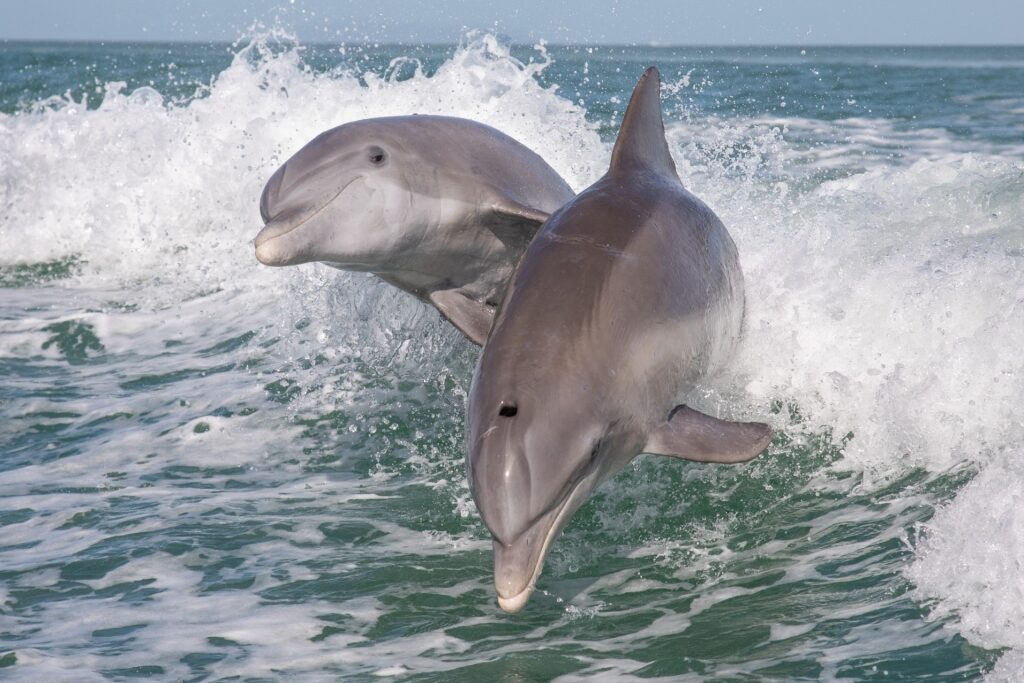
Atlantic bottlenose dolphins
First, you’ll head to where Atlantic bottlenose dolphins are commonly spotted and observe them from the boat. Dolphins are curious and will often approach boats to check them out. Then, you’ll head to the shallows of the Marine Refuge for snorkeling straight off the boat.
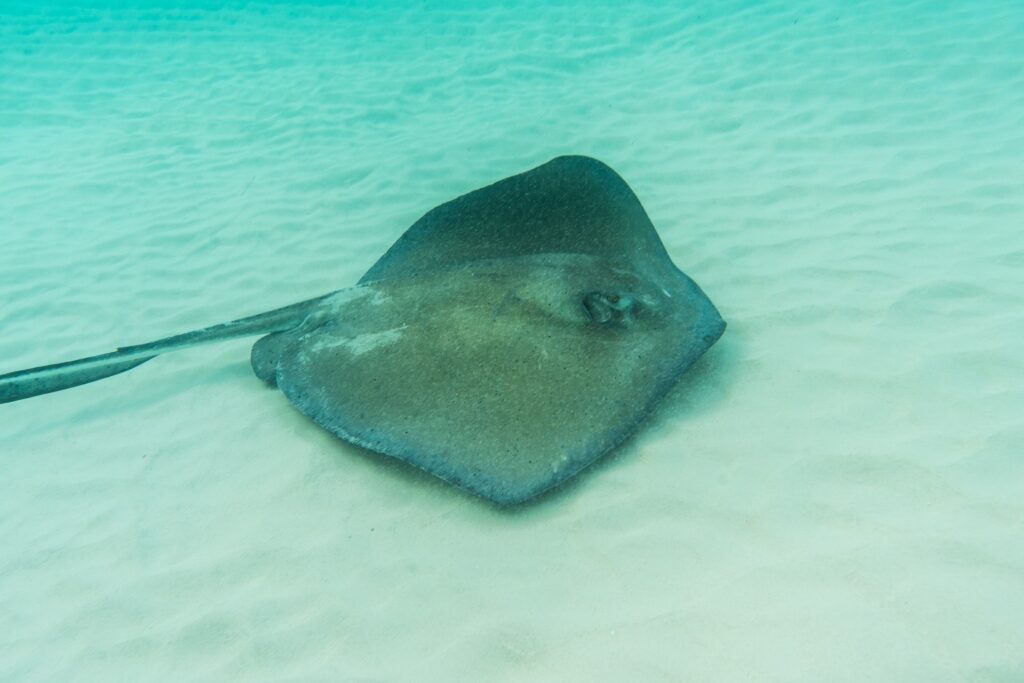
Stingray
Descend the ladder into a world that’s teeming with brightly colored fish shoaling over sea fans, sponges, and clumps of coral. Look at the white sand for buried stingrays, which shake themselves off and dart across the sea bed.
Sand Key Lighthouse Reef
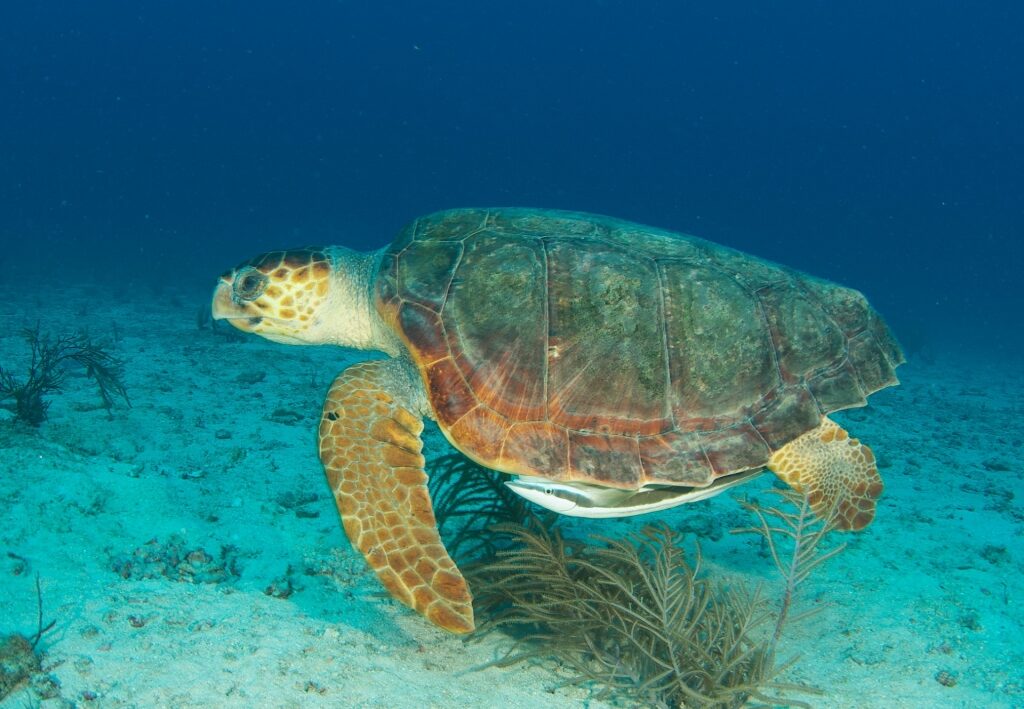
Loggerhead turtle
Part of the Sand Key Sanctuary Preservation Area, this protected snorkeling spot is one of the best places for snorkeling in Key West.
The reef lies about seven miles from Key West and is a popular day trip. The coral is impressively healthy here, as there’s a strict no-take policy in place, so fishing and lobster hunting are banned.
The focal point of the reef is an old iron lighthouse, rusted red, which was built in 1853. There was a brick lighthouse here before, which was destroyed in a storm in 1846. You can still see parts of it on the ocean floor.
More interesting, though, is the spectacular coral, lying at depths of between five and 20 feet. To the south of the reef, the ocean floor drops away to up to 90 feet, and it’s here that scuba divers head.
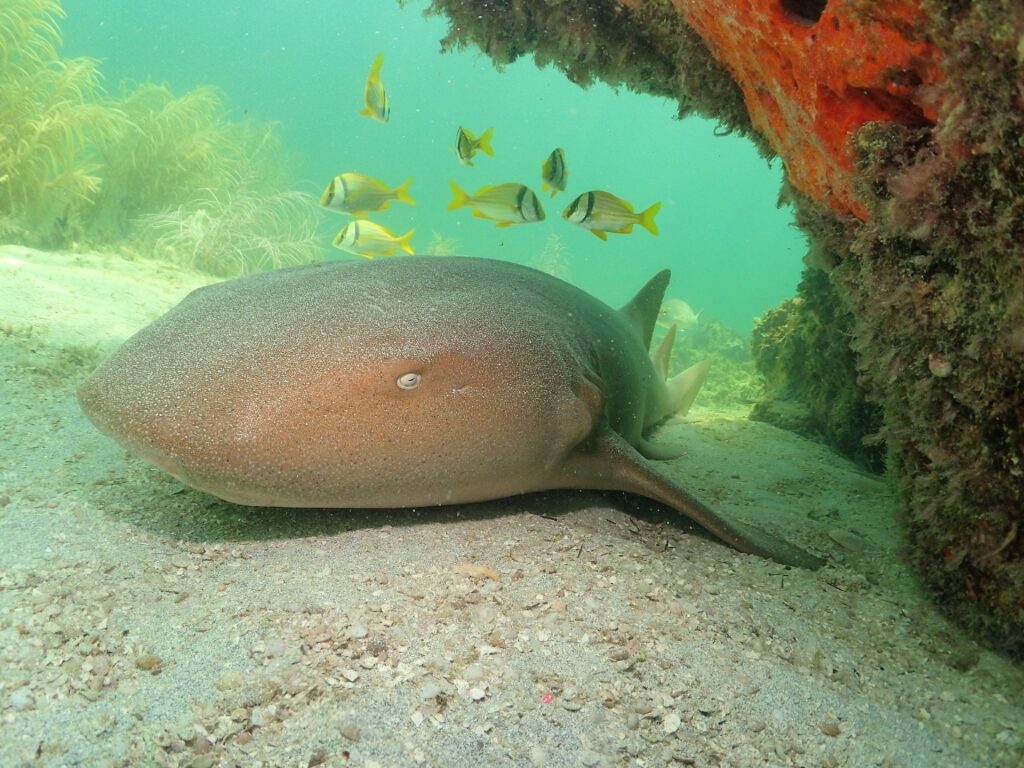
Nurse shark
Look out for loggerhead turtles, batfish, barracuda, nurse sharks, and graceful manta rays as you snorkel in the crystal-clear water. You’ll also see pretty angelfish and long, skinny trumpetfish, and if you look closely, you could spot a moray eel peeking out of its hiding place.
Stay away from the fire coral, though, as it can cause a nasty rash if you brush against it. If in doubt, wear a thin, shortie wetsuit or a rash vest for your snorkel trip.
Rock Key
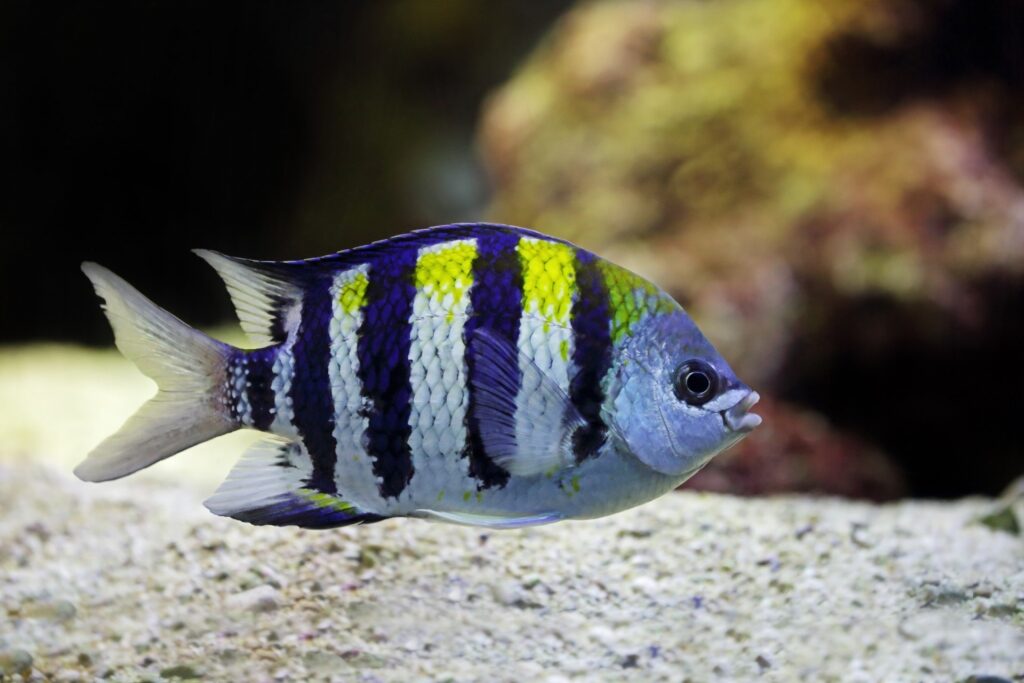
Sergeant major fish
Rock Key Sanctuary Preservation Area lies to the east of Sand Key and is popular among day boats and snorkel tours. You’ll find vibrant coral extending in long fingers, with deep canyons between the outcrops for exploring, if you can take a deep enough breath.
The marine life is impressive, from blue tang and yellowtail snapper to dapper sergeant major fish sporting chic black stripes. With depths of between five feet and 35 feet, snorkeling here is suitable for most levels of experience.
Read: Best Things to Do in Key West for Couples
Eastern Dry Rocks
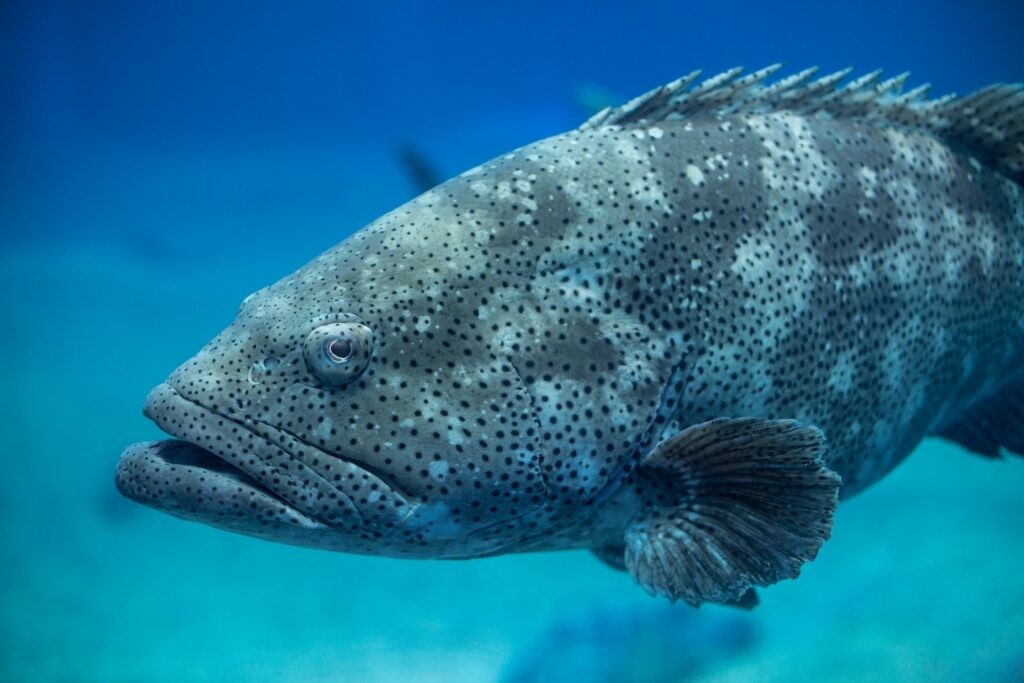
Goliath grouper
Further beyond Rock Key and Sand Key, six miles south of Key West, the Eastern Dry Rocks Sanctuary Preservation Area is another spot where you can view thriving coral fingers and canyons in clear, relatively shallow water.
Creatures you might spot here include sea turtles, spotted eagle rays, Goliath grouper, and spiny lobsters. Nurse sharks can sometimes be seen near the drop-offs, as can tarpon, big, silvery fish that grow to between four and eight feet long.
Ask your guides to point out the remains of an old Spanish galleon, long absorbed into the ecosystem and covered with coral.
Cottrell Key
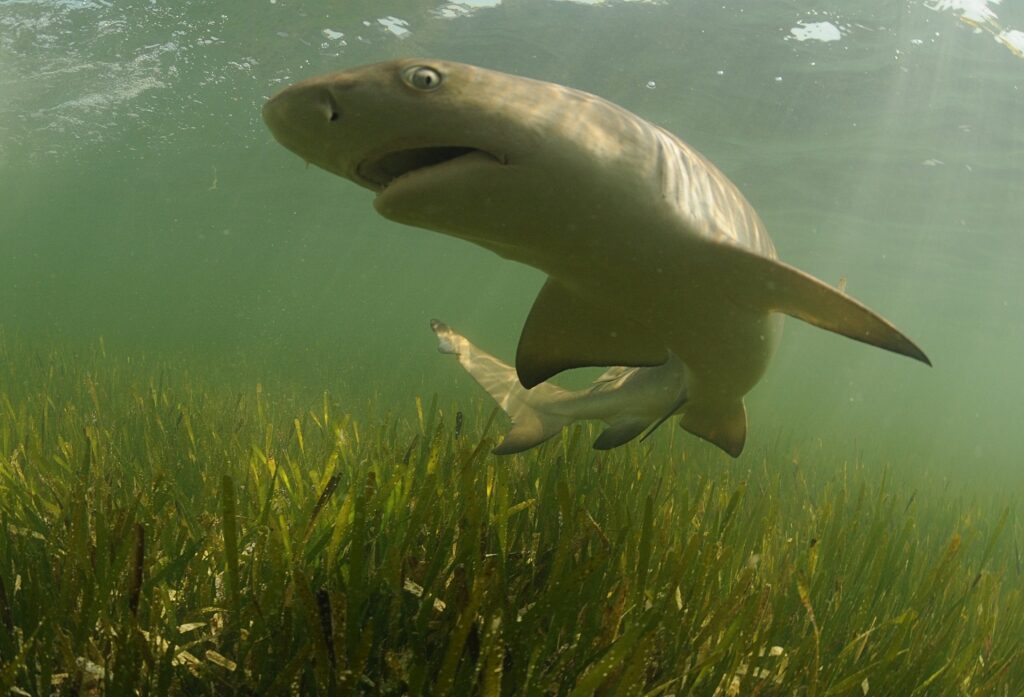
Lemon shark
Cottrell Key is a small island populated by mangroves, located around nine miles northwest of Key West. This is another great snorkeling spot that you can only access by boat.
Cottrell Kay is famous for two things: a dazzling sponge garden and a proliferation of sharks. Nurse, reef, and sometimes lemon and hammerhead sharks can be seen here.
You may also find yourself in the company of curious dolphins, stingrays, and massive Goliath groupers. Look out for sea turtles gliding through the blue depths or feeding on the seagrass.
You could see green turtles, the second largest sea turtle species, which are sadly endangered. Less confident snorkelers can enjoy the colors under the shallow waters near the shore, looking out for conch and sea urchins, as well as colorful sea stars.
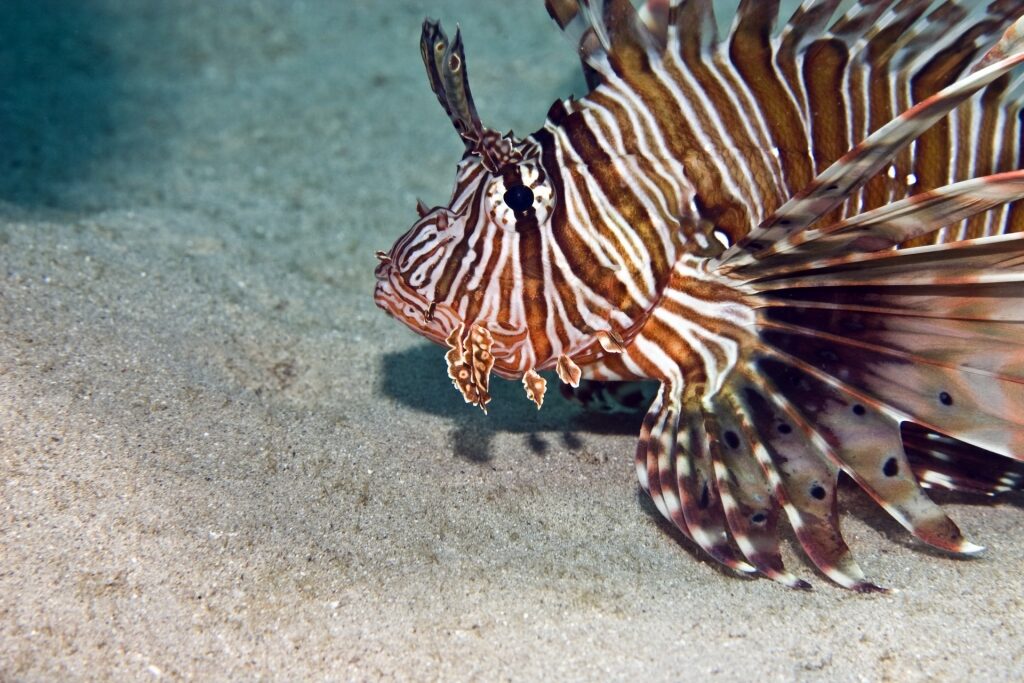
Lionfish
During your snorkel adventures from Key West, look out for the curious lionfish, an orange-and-white striped, frilly creature with protruding eyes and menacing-looking spines.
Lionfish are actually an invasive species in the Florida Keys. They’re believed to have arrived as recently as the 1990s, escaping aquariums or being thrown into the water by amateur fish enthusiasts.
Because they have no predators, lionfish have become very successful, to the detriment of other species. Although their spines are toxic, they’re regarded as a delicacy (once the spines have been removed) and Floridians are actively encouraged to catch and eat them.
Bahia Honda State Park
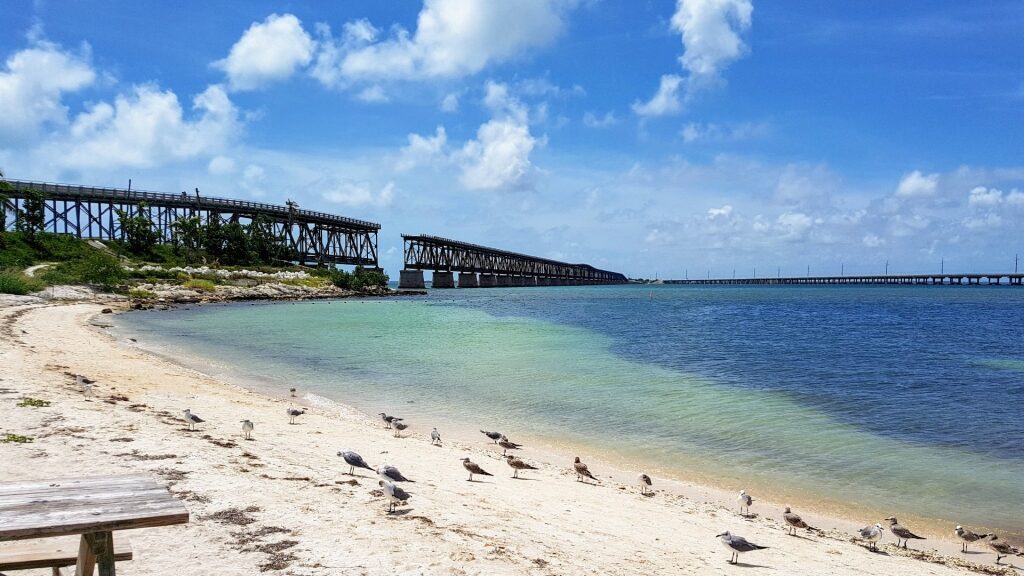
Bahia Honda State Park
Bahia Honda is a peaceful spot around an hour’s drive from Key West, known for its beautiful, palm-fringed beaches and snorkeling in crystal-clear water.
Join a snorkel tour out to the Looe Key National Marine Sanctuary, one of the finest reefs in the system. With depths from just five feet to 70 feet, even novice snorkelers will be able to enjoy the teeming underwater life.
You can snorkel off the beach, too. Swim over the seagrass beds, keeping a lookout for spiny lobster, bright red sea stars, and queen conch.
Marquesas Keys
The Marquesas Keys are yet more uninhabited islands, some 20 miles to the west of Key West, an extension of the barrier reef. The ten islands are said to be named after the Marquis de Caderieta, a Spanish commander, whose fleet sank here in 1622.
They’re a popular spot for snorkelers and divers, particularly as the reefs are really thriving here. You’ll see tall pinnacles and blooming coral heads, as well as underwater caves, although only divers can access these. There’s a wide variety of marine life and a good chance of spotting sharks.
Read: One Day in Key West
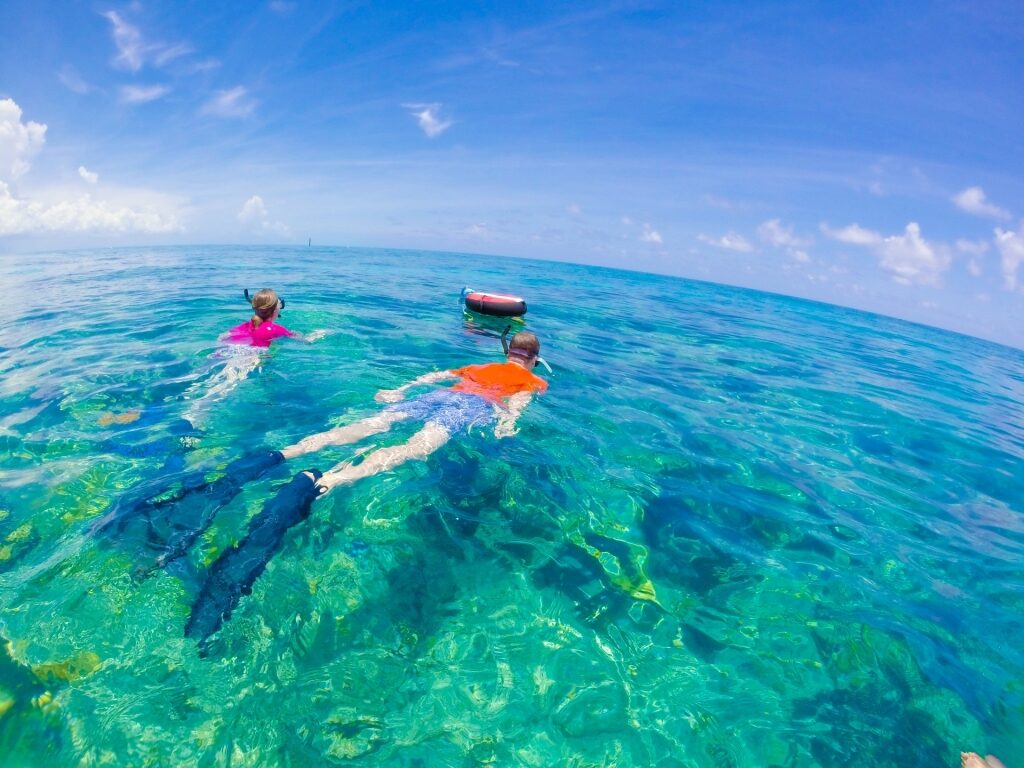
Snorkeling in Key West
Discover the best places to snorkel in Key West on a cruise. Browse our cruises to Key West and plan your next tropical getaway with Celebrity.
